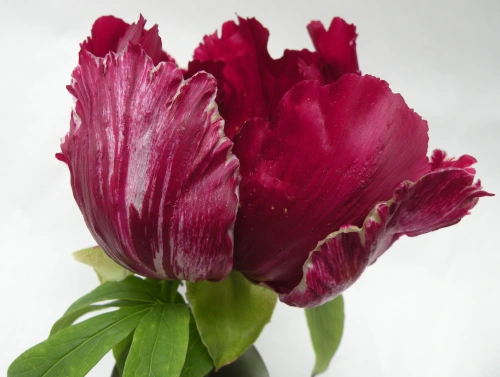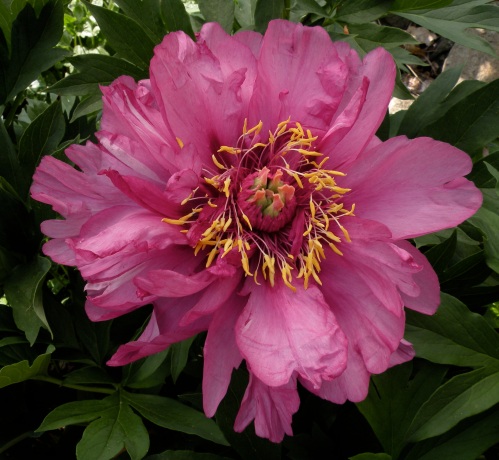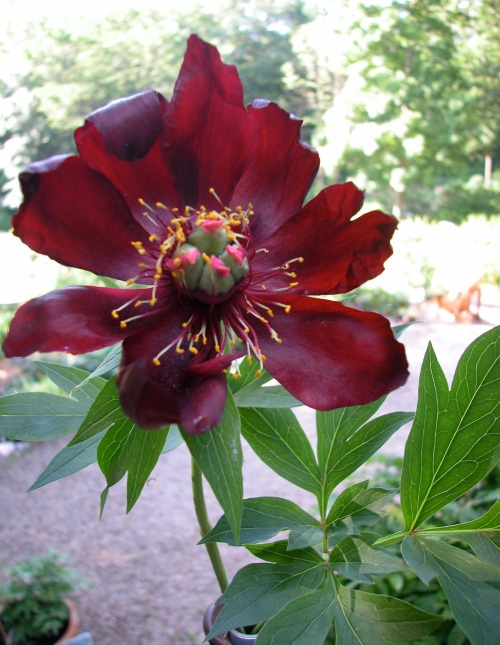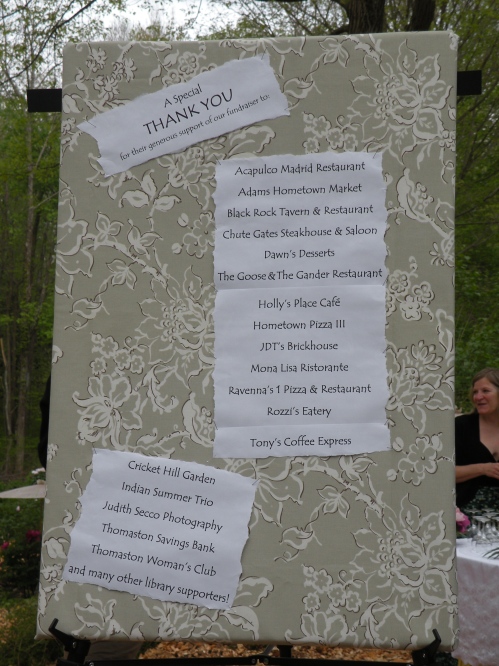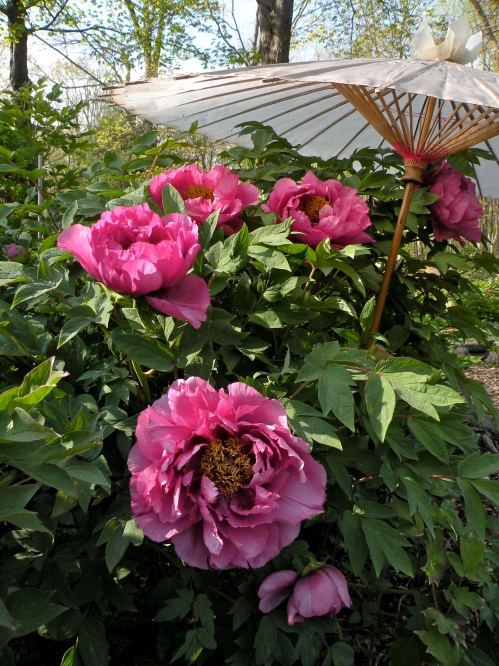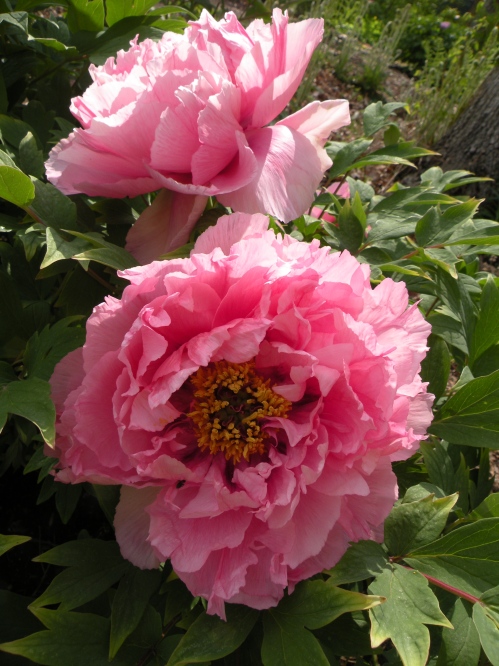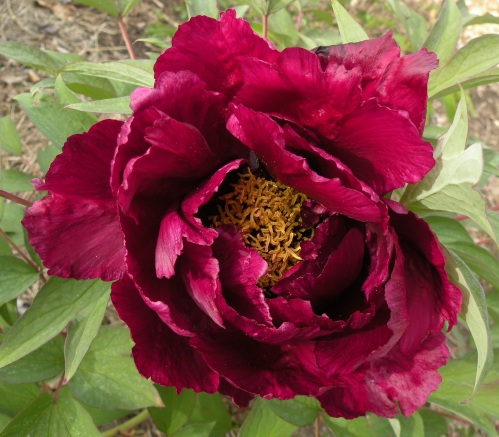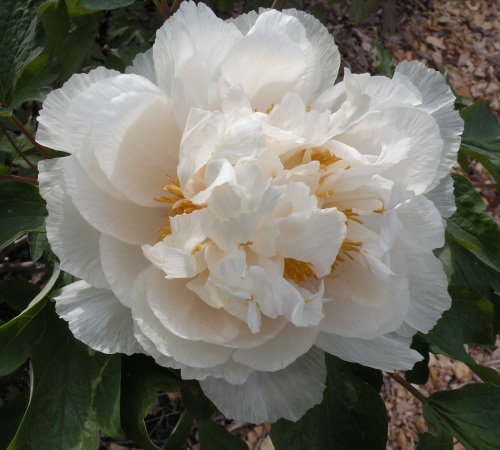Do you have a chimera peony in your garden, at tree peony which also blooms as a herbaceous peony? In fact, this is not some rare mutation, but a rather common circumstance in which the the tree peony’s herbaceous peony understock, or rootstock has sprouted.

A ‘Souvenir du Maxime Cornu’ tree peony in our garden on which the grafted herbaceous understock has sprouted and blooming. In this case the herbaceous understock is blooming simultaneously with the tree peony.
Tree peonies are most commonly reproduced by grafting. Briefly, this is a method of propagation in which a tree peony scion, or cutting, is fused to the root of herbaceous peony. This acts as a ‘battery’ to power the tree peony in its first few years of growth. I detailed this process in a post last year.

An unhealed tree peony graft, with the tree peony scion held to the herbaceous peony understock with a rubber band.
Ideally, by the time tree peonies leave the nursery, they will have grown their own roots. This is achieved by planting young tree peonies deeply to entourage the grafted scion to sprout its own roots. At Cricket Hill Garden, we strive to only send out grafted tree peonies which have also sprouted some of their own roots and also mark the correct planting depth on each tree peony we ship. Many of our tree peonies are propagated by division and are on their own root. Unfortunately, many retail garden centers and non-specialist nurseries do not plant young grafted tree peonies deeply enough, nor do they give customers proper instructions for planting.

This tree peony is beginning to send out its own roots. The bulbous portion of the root is that of the herbaceous undertstock. For this plant to thrive, it needs to be planted very deeply so that the tree peony continues to spout its own roots.

This is a young grafted tree peony which has been planted correctly in the nursery and has established more its “own roots.” The tree peony roots are the more slender, lighter color ones located above the darker herbaceous understock. We like to mark the depth to plant, as all tree peonies are individiual. On this tree peony, you are planting to a depth up the stem, right below the first branching. This is typical of the grafted tree peonies that we grow and sell at Cricket Hill Garden.
If a tree peony is planted too shallowly, the plant is unable to form its own roots. This can lead to both sprouted understock as well as overall plant weakness.

This tree peony was planted too shallowly, in this case below the graft union. In this case it will be impossible for the tree peony to ever form its own roots. In an instance like this, more soil should be mounded up around the plant.
If left unattended, sprouted herbaceous peony understock on a tree peony will gradually sap the strength from the tree peony, to the point where it will eventually be overcome and killed out by the herbaceous peony. To avoid this the herbaceous rootstock must either be cut away below the soil line in spring or separated from the tree peony at the root in the fall. The tree peony is more rare and valuable and therefore is the plant to save. The simplest thing to do is cut back the herbaceous peony foliage BELOW the soil line and then mound up 6” of soil around the base of the tree peony. This can be done at anytime, and will discourage the herbaceous peony from re-sprouting as well as encourage the tree peony to form its own roots.
If you do want to save the herbaceous peony and plant it out in another part of your garden, wait until the fall to do this. In a few months, when it’s time to dig and divide peonies I will do a follow up post which will illustrate dividing a herbaceous understock from a tree peony.

